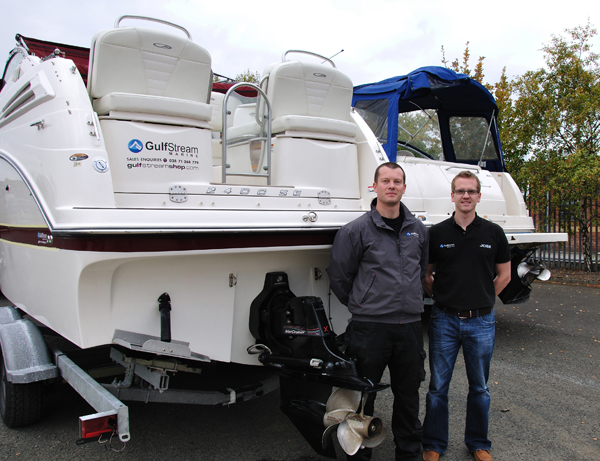Displaying items by tag: Cummins Medcruiser Diesel (CMD)
Cummins Mercruiser Expands Dealer Network
The appointment is part of CMD's strategy to improve Cummins parts, service and after sales support to the Irish market. GulfStream Marine has a strong engineering focus with a team of mobile engineers and extensive workshop facilities at its premises in Derry. Currently thecompany generates around 50% of its turnover from the provision of engineering services to both the leisure and professional sectors.
Announcing the appointment, a representative of Cummins UK CMD Marine Centre, said: 'A significant amount of new Cummins Mercruiser Diesel product has been delivered into Ireland in recent years and this is set to increase as our market share grows throughout Europe, particularly as we strengthen relationships with OEM boat builders. The recently announced Strategic Alliance between CMD and Volkswagen, also means that from 1st January 2011 the Cummins Mercruiser Diesel dealer network will assume service and warranty responsibility for all engines previously sold under the Volkswagen Marine brand'.

Cummins Technician, Mark Nicholl and GulfStream Marine Managing Director Niall Heaney.
'We are dedicated to ensuring that we have a professional back-up service available in Ireland to support this expanding product range and this is what GulfStream Marine will deliver. We are impressed with their commitment to quality of service and the expertise of their engineering department. We will be working closely together over the coming months and years to ensure that Cummins Mercruiser Diesel customers receive the highest levels of after-sales support'.
Niall Heaney, GulfStream Marine Managing Director, said: "We are delighted to be working with Cummins Mercruiser Diesel. In addition to our Mercruiser petrol inboard and Mercury outboard engine dealerships, this brand rounds out our complete marine engine sales and service offering. With our existing experienced engineering team, our reach for the provision of Cummins Mercruiser Diesel engine sales and support extends throughout the island of Ireland. In today's market customers are seeking convenient service and expert knowledge of the product; this is what we strive to deliver, with all our engineers undertaking continuous training and the ability to carry out service anywhere in the country'.
'We feel that CMD really does stand out from the competition in terms of their dedication to providing the highest levels of dealer support, which in turn means that we can deliver industry leading after-sales care to our customers. Just one example of this is their standard, free of charge, next day delivery service on all stock parts and accessories'. For further information logon to www.gulfstreamshop.com





























































